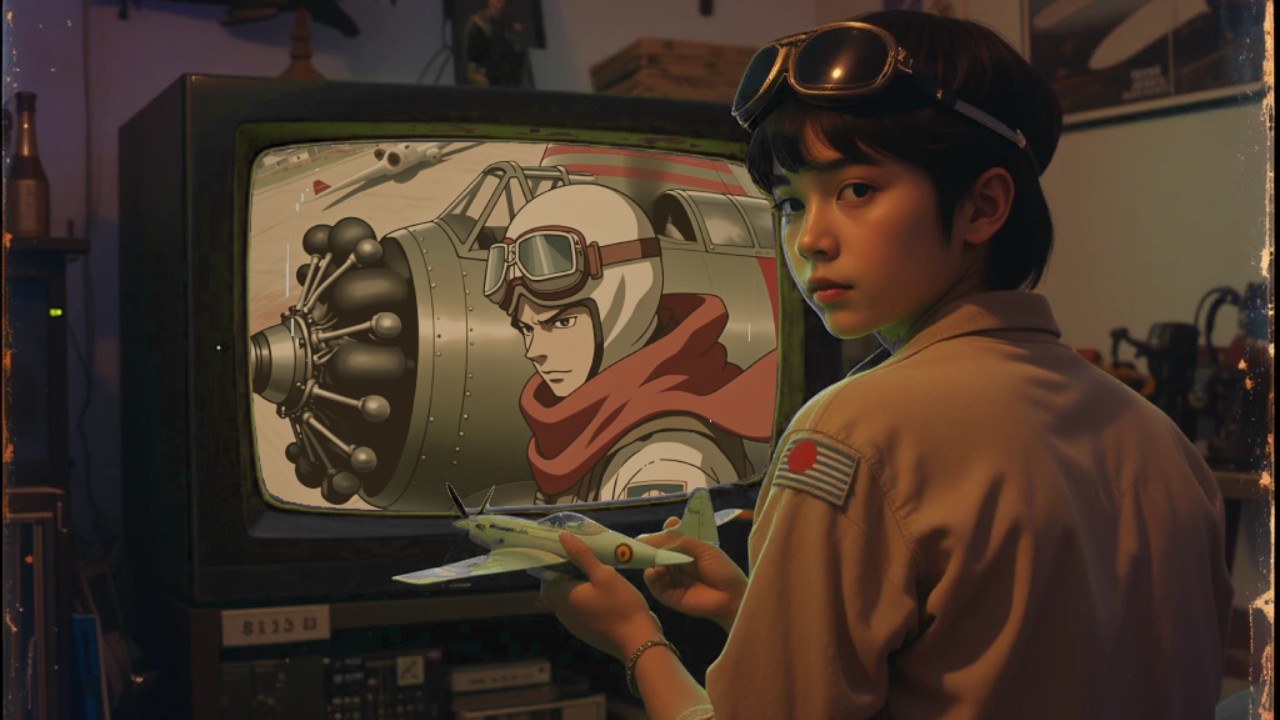In Japan, aviation has long captivated the public’s imagination—from the pioneering work of engineers at Mitsubishi to the heroic exploits of pilots in wartime and beyond. While museums preserve the real machines, anime extends their legacy by weaving aircraft into compelling stories that blend drama, adventure, and technical wonder. By putting planes center stage—whether as sleek fighters dogfighting in the sky or as support vehicles in daring rescue missions—anime brings aviation’s romance and tension to screens around the world. It reminds viewers of what flight represents: freedom, innovation, and the courage to push past known limits.
Honoring History Through Animation

Many aviation-themed anime draw directly from real Japanese aircraft and their historical contexts. The Wind Rises (2013) offers a poetic take on Jiro Horikoshi, the Mitsubishi engineer behind the iconic A6M Zero, dramatizing both his passion for design and the moral weight of his creations.

Similarly, Porco Rosso (1992) evokes 1920s air races over the Adriatic, capturing the elegance and risk of early flight. By spotlighting authentic machine details—from engine cowls to cockpit gauges—these films educate as much as they enthrall, leaving viewers eager to learn more about the actual aircraft they represent.
From Dogfights to Rescue Missions

Not all anime frame aviation in a wartime context. Series like Yomigaeru Sora: Rescue Wings (2006) center on the Japan Air Self-Defense Force’s helicopter crews, blending technical realism with emotional storytelling. Viewers follow pilots and medics as they navigate typhoon-tossed skies to save lives, gaining appreciation for the machines’ capabilities and the human dedication behind each mission.

The Magnificent Kotobuki (2019) brings high-energy dogfights to life with mercenary pilots and creatively styled aircraft. While set in a fictional world, it still respects real aerodynamics and squad tactics—making each aerial clash not only exciting, but also grounded in flight dynamics that modelers and aviation fans appreciate.
Futuristic Fighters and Cultural Icons

Science fiction franchises take aircraft into new realms. The Macross series (1982–present) transforms jets into variable fighters, combining rock concerts with epic space battles. Its blend of hard-edged mecha hardware and cultural performance has made Macross a lasting emblem of anime’s capacity to reimagine flight.

The Cockpit (1993), an anthology based on Leiji Matsumoto’s wartime tales, presents intense, character-driven narratives. Each short film explores moral dilemmas faced by pilots, reminding viewers that beyond the machines are human stories—of duty, regret, and sacrifice—etched into the skies they fought to control or survive.
Keeping the Hobby Airborne

Anime has sparked a renewed passion for Japanese aircraft among younger fans, many of whom transition into scale modeling. Inspired by animated scenes, they recreate Zeroes, Tomcats, and rescue helicopters using kits from Hasegawa, Fine Molds, and Fujimi—turning their favorite flying machines into tangible, detailed tributes fueled by nostalgia and imagination.

Modelers go beyond assembly by using anime-inspired decals, inventive paint schemes, and detailed dioramas. Whether recreating intense aerial battles or quiet hangar moments, these builds become expressions of both creativity and fandom. In their hands, aircraft once seen on screen take flight again—this time through careful craftsmanship, preserving aviation’s legacy through personal artistry.














